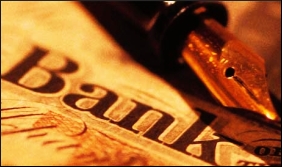|

|
'No impact of rupee slide on Indian banks'
|
|

|
|
| Top Stories |
 |
|
|
|
SME Times News Bureau | 29 May, 2012
The rupee's slide against the dollar had no impact on Indian banking operations though profitability of importers would be affected, State Bank of India (SBI) chairman and managing director Pratip Chaudhary said Monday.
"There is no impact of a falling rupee on banks but it (slide) would strain the profitability of our importing customers, while exporting customers will have an advantage," Chaudhary told reporters on the margins of a bank function in Bangalore.
At the same time, despite currency volatility, the bank has seen higher remittances from non-resident Indians (NRIs) in their accounts to benefit from the conversion from dollar to rupee.
Owing to external and internal factors, the Indian rupee has weakened by 23 percent during the last five months, hitting a record low of Rs.56.40 May 23 but recovered slightly to trade in the Rs.54.80-Rs.55.50 range subsequently. It was trading at Rs.55.26 Monday.
Noting that further cut in interest rate would depend on government borrowings this fiscal (2012-13), the chairman said banks were borrowing at 8.5 percent (from the RBI) and lending (primary rate) to the corporate sector at nine percent and above as the government borrowings was at eight percent currently.
"Lowering of interest rate is largely determined by the rate at which the government borrows from the central bank. If the RBI cuts rates further, banks will be in a position to lower lending rate," Chaudhury said after donating a Rs.8.40-lakh school bus to Angavikalara Ashakirana Trustat Davangere, about 260km from here, as a gift from the bank's regional office.
The Reserve Bank of India (RBI) April 17 reduced key rates such as repo (repurchase) rate 50 basis points (0.5 percent) to 8 percent from 8.5 percent, resulting in the reverse repurchase rate decreasing to 7 percent from 7.5 percent for this fiscal (FY 2013).
The repo rate is the interest the central bank levies on short-term borrowings by commercial banks. The reverse repo rate is the interest on short-term lending. A cut in these rates rate reduces the cost of accessing funds for lending institutions.
As the SBI's base lending rate was at 10 percent, lowest among state-run banks, it did not lower it further after the RBI's rate cut.
"We have, however, reduced interest rates on loans for education and purchase of cars and to small and medium enterprises (SMEs)," Chaudhury added.
|
|
|
| |
|
|
|
|
|
|
|
|
|
|
|
|
|
|
| |
| Customs Exchange Rates |
| Currency |
Import |
Export |
US Dollar
|
66.20
|
64.50 |
UK Pound
|
87.50
|
84.65 |
Euro
|
78.25
|
75.65 |
| Japanese
Yen |
58.85 |
56.85 |
| As on 13 Aug, 2022 |
|
|
| Daily Poll |
 |
 |
| PM Modi's recent US visit to redefine India-US bilateral relations |
|
|
|
|
|
| Commented Stories |
 |
|
|
|
|
|
| |
|